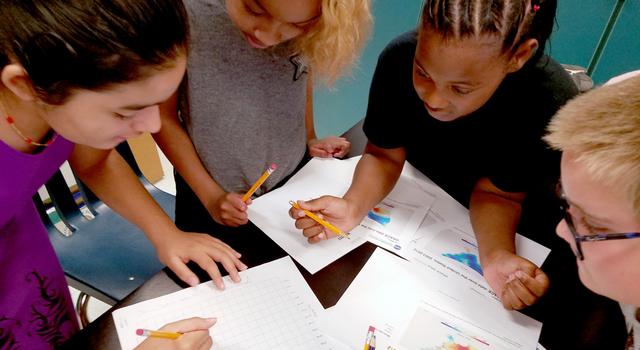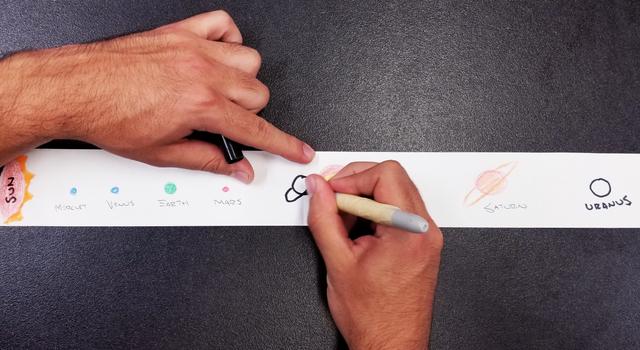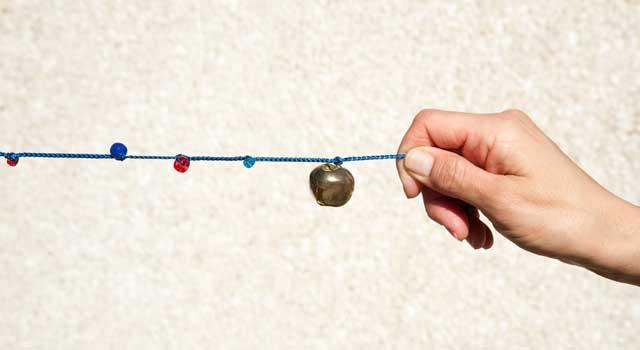Classroom Activity
Solar System Scroll
Overview
One of the most persistent misconceptions for students (and even adults) is just how much space is in space! Our solar system is often depicted as a bunch of planets equidistant from one another, always in a straight line. However, as seen in this activity, the relative distance between planets doesn’t fit very well on a single page.
In this activity, students will predict the scale of our solar system and the distance between planets, then check their answers using fractions.
Materials
Management
- Because the activity uses relative distance and fractions, the length of each piece of paper isn’t critical. However, one “wingspan” (the length from fingertips to fingertips, if you’re spreading your arms apart) is usually a good length so that students don’t feel too crowded while making their predictions.
- Try using colored pencils and markers for students’ guesses. Then, once the correct locations are discussed, use something bolder, such as a black marker, to be able to quickly see the predictions versus the correct placements of each planet.
Background
One of the common misconceptions people have about our solar system has to do with the relative distances between the planets.
Think about whenever you’ve seen our solar system represented in textbooks or images: The planets are always aligned, as if in some kind of multi-planet eclipse, and they are all equally spaced apart. Yet the truth is that the planets are not in a straight line and the distance between planets is very different. For example, the average distance between Earth and Mars, our neighboring planet, is around 225 million kilometers, while the distance to our next-nearest planet, Jupiter, is roughly 630 million kilometers. And as we get farther away from the Sun, those distances can really add up!
How big are the planets and how far away are they compared to each other? See how the sizes of planets and the distances between them compare in this video. Credit: NASA/JPL-Caltech | Watch on YouTube
As a result, when we send spacecraft to planets like Saturn, we end up having to traverse vast expanses of empty space to get there. This is why so few spacecraft have gone to the outer planets and beyond.
Procedures
- Provide students with a strip of paper. On their paper, have students draw and label the Sun on one end and Pluto on the other, using colored pencils or markers. (For our purposes, we include Pluto, but Pluto is not a planet. If you prefer, you can label this end “Kuiper Belt.”)
- Take a guess! Have students fill in the remaining objects of our solar system in the space between the Sun and Pluto, paying attention to the relative distances between the objects. Are they evenly spaced? Or are some closer than others?
- Now with their guesses marked, students can find the actual distances between solar system objects. First, have them fold the strip in half. Using a bold color, label the midpoint (1/2 mark) Uranus.
- Now, take the side where you have the Sun labeled and fold it to the Uranus mark. The new crease (at the 1/4 mark) is where Saturn is located.
- Repeat the last step but this time with the Pluto side. This crease (at the 3/4 mark) is Neptune.
- Starting with the Sun again, fold the strip of paper to the Saturn mark. This new crease is at the 1/8 mark and is where we would find Jupiter.
- Repeat again, taking the Sun to the new Jupiter mark. This represents 1/16 and is where the asteroid belt is found.
- Repeating once more, at the 1/32 mark, we find Mars.
- That means that all of the remaining inner planets (Earth, Venus and Mercury) are between Mars and the Sun. So when you hear them called the “inner planets,” there is a good reason why!
- Have students add a key to their scroll to identify which marks are guesses and which are the actual planet locations.
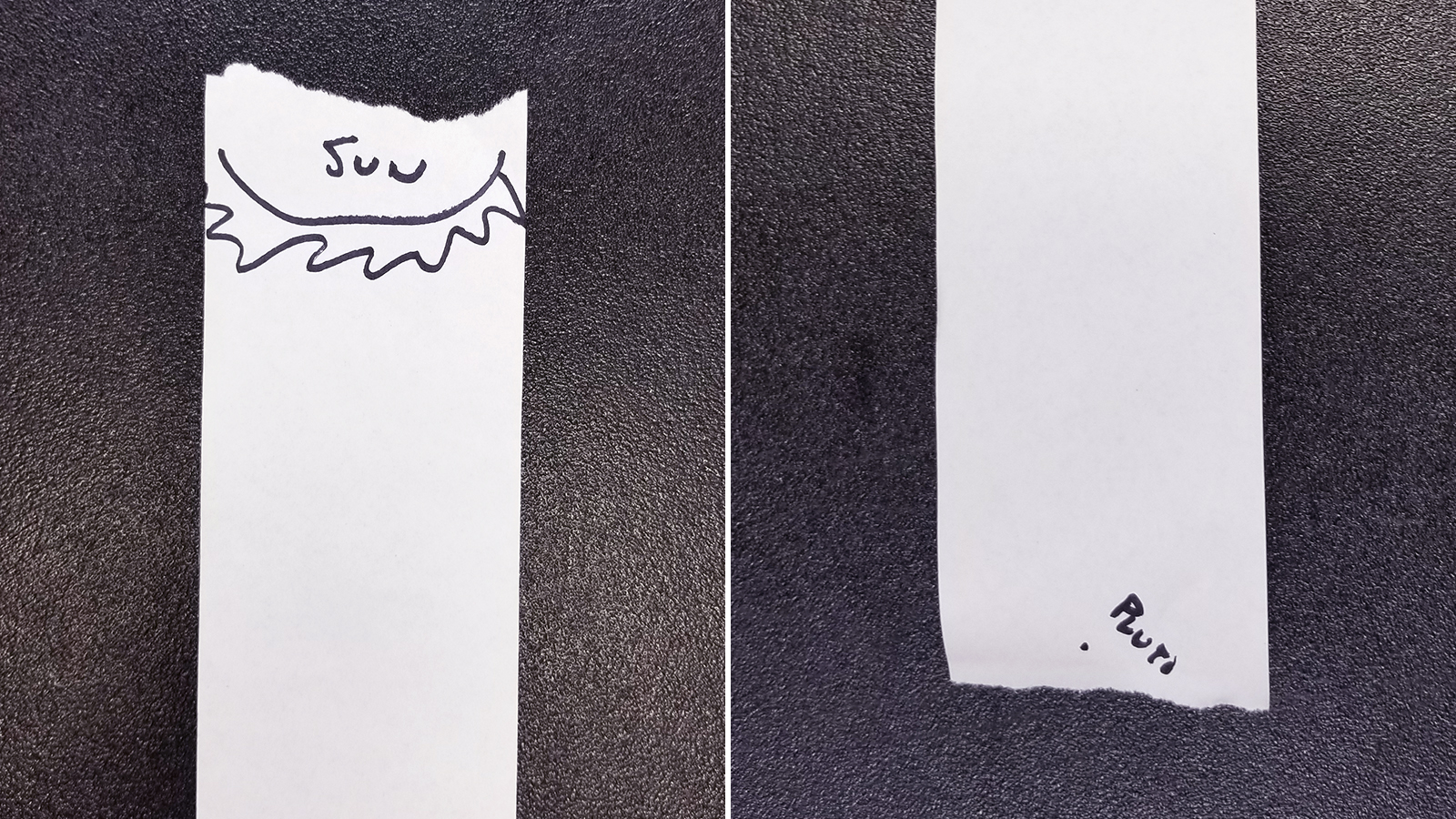
Step 1 | + Expand image
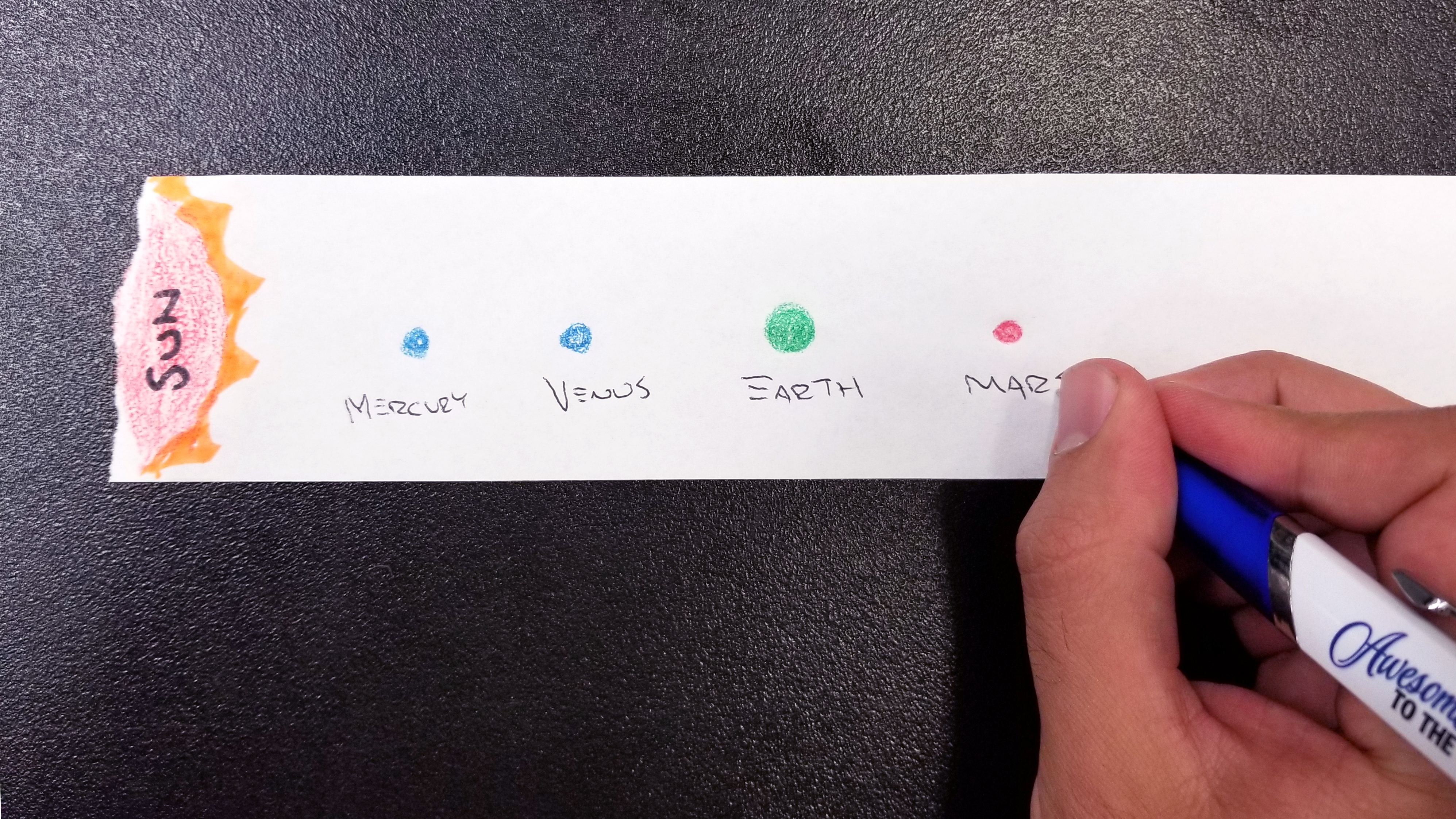
Step 2 | + Expand image
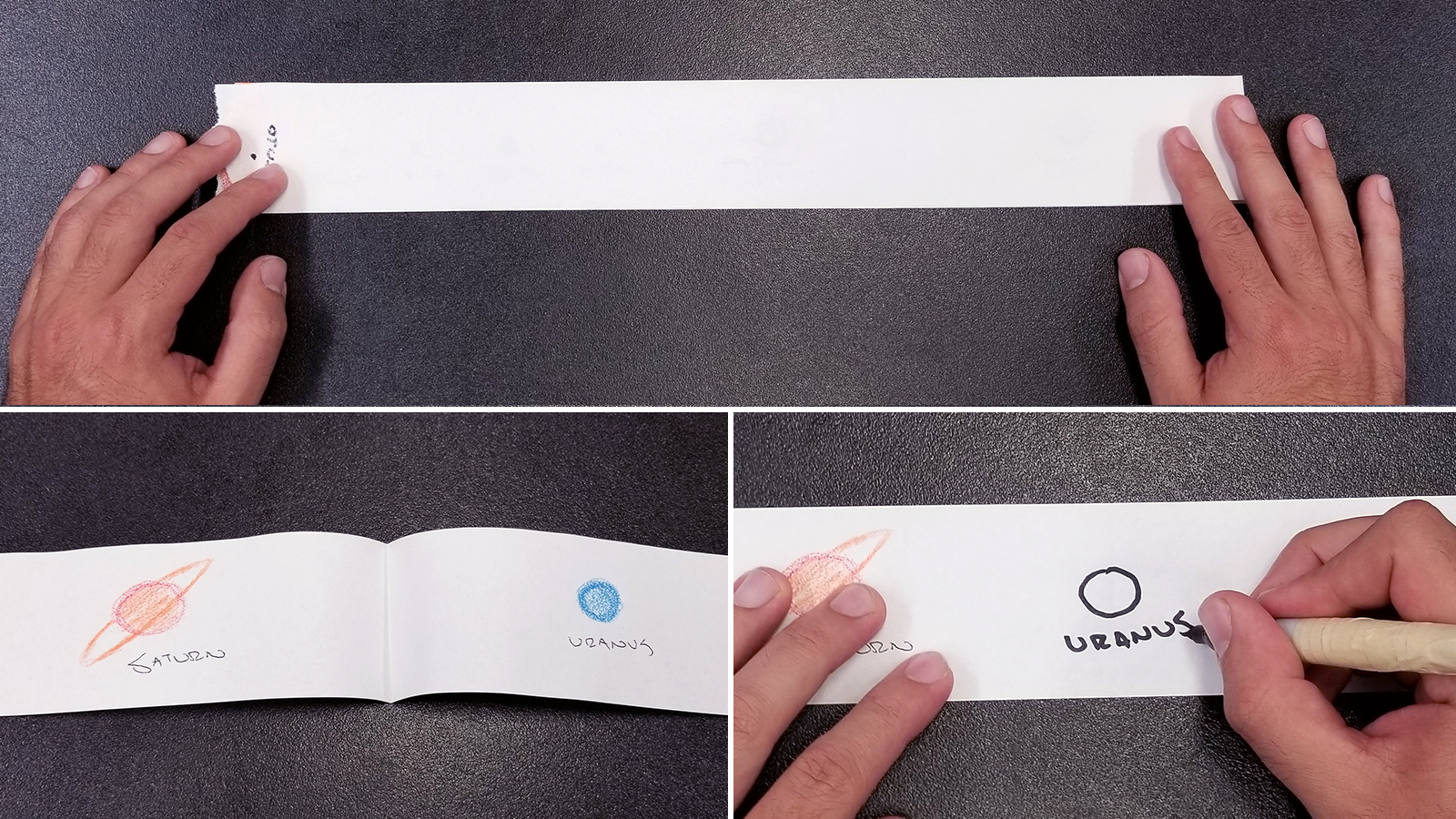
Step 3 | + Expand image
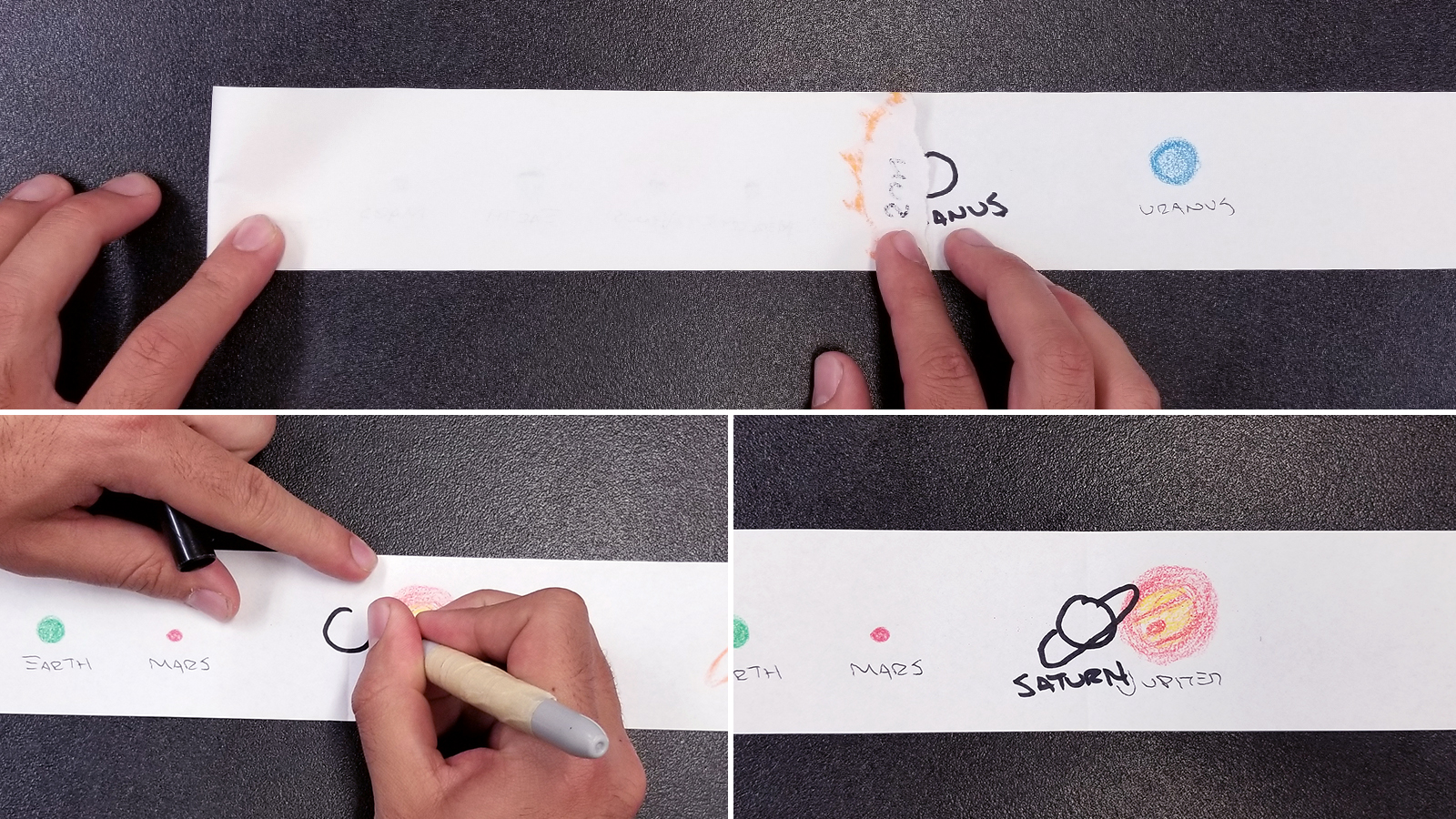
Step 4 | + Expand image
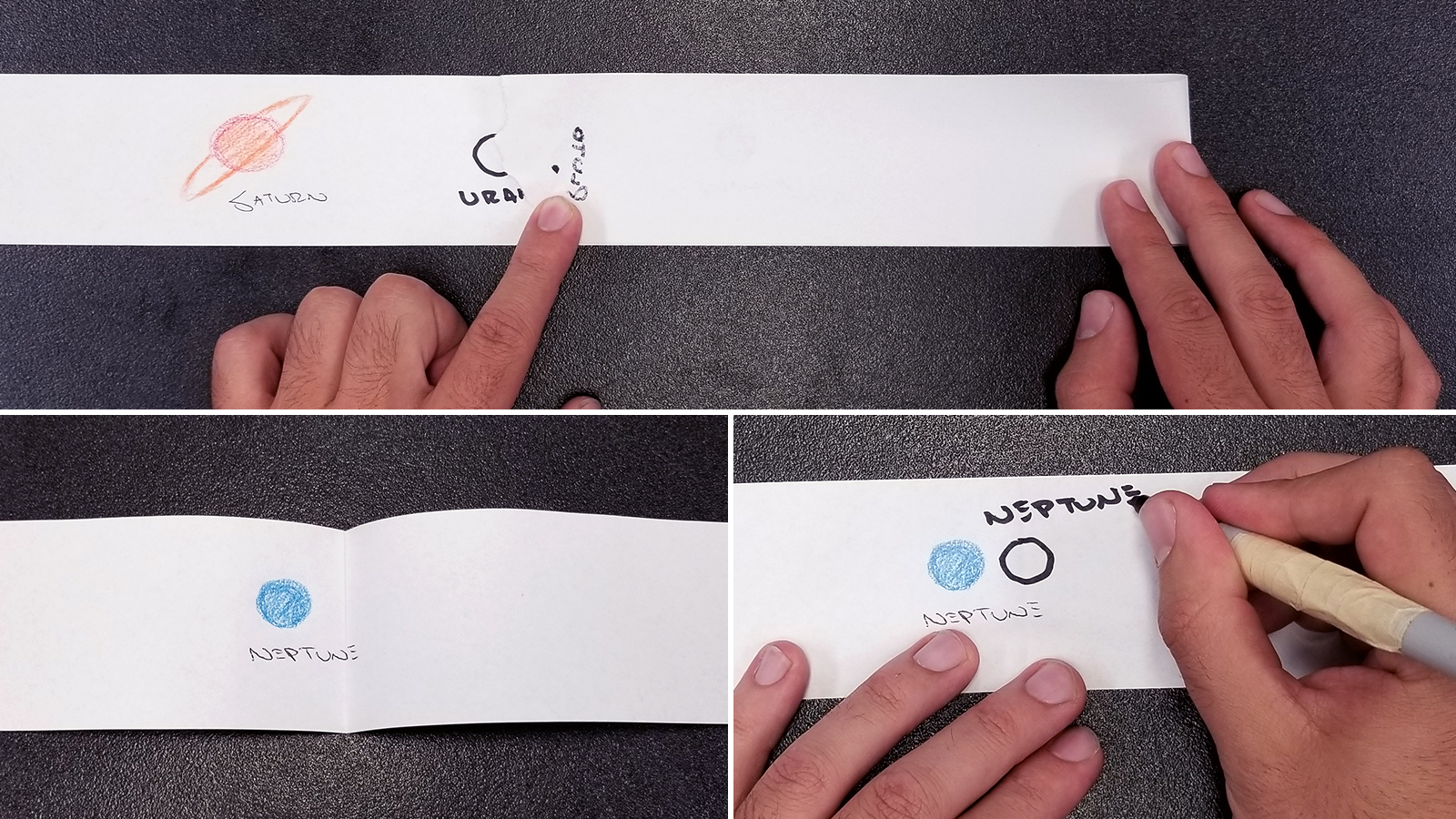
Step 5 | + Expand image
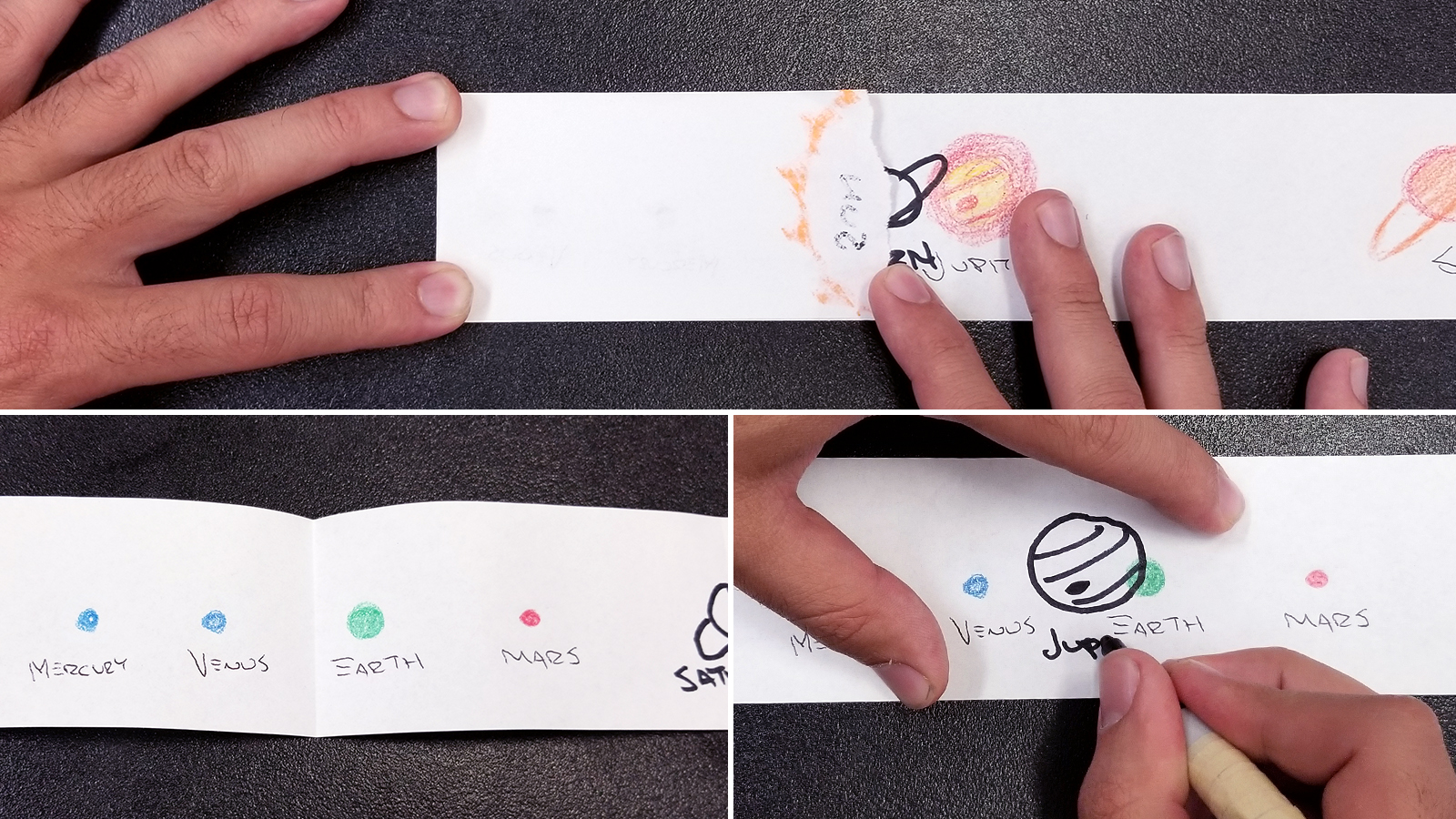
Step 6 | + Expand image
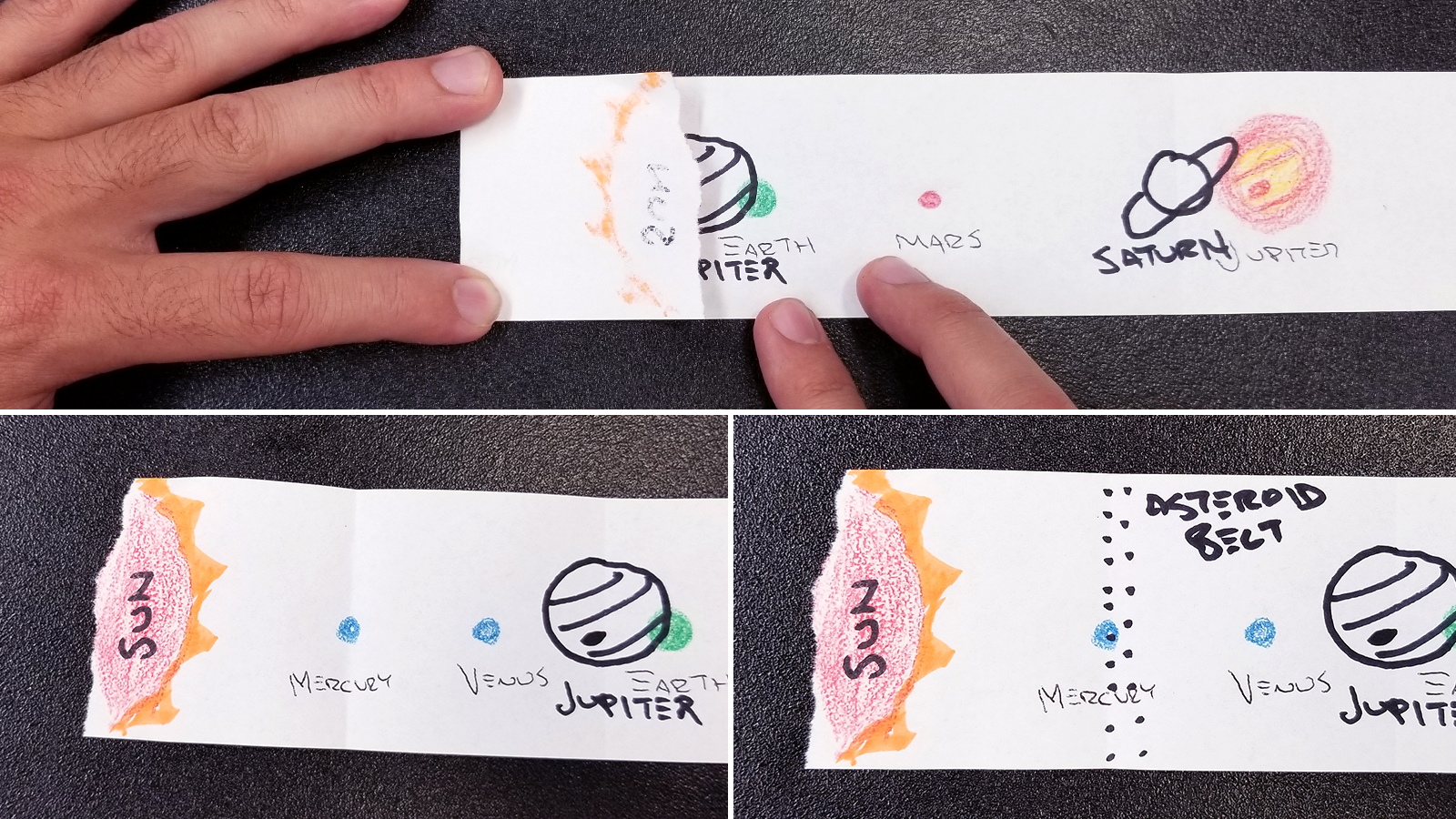
Step 7 | + Expand image
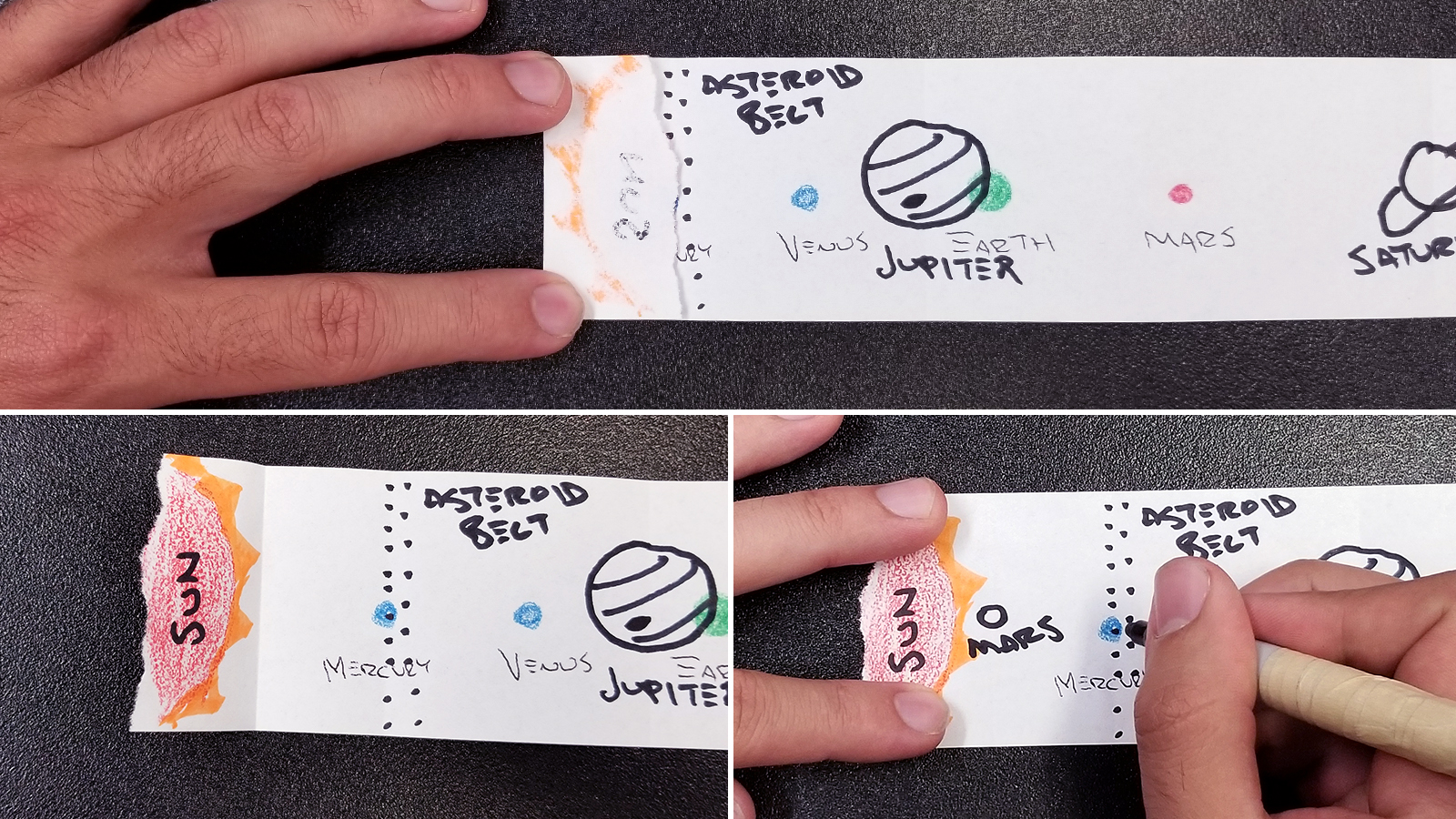
Step 8 | + Expand image
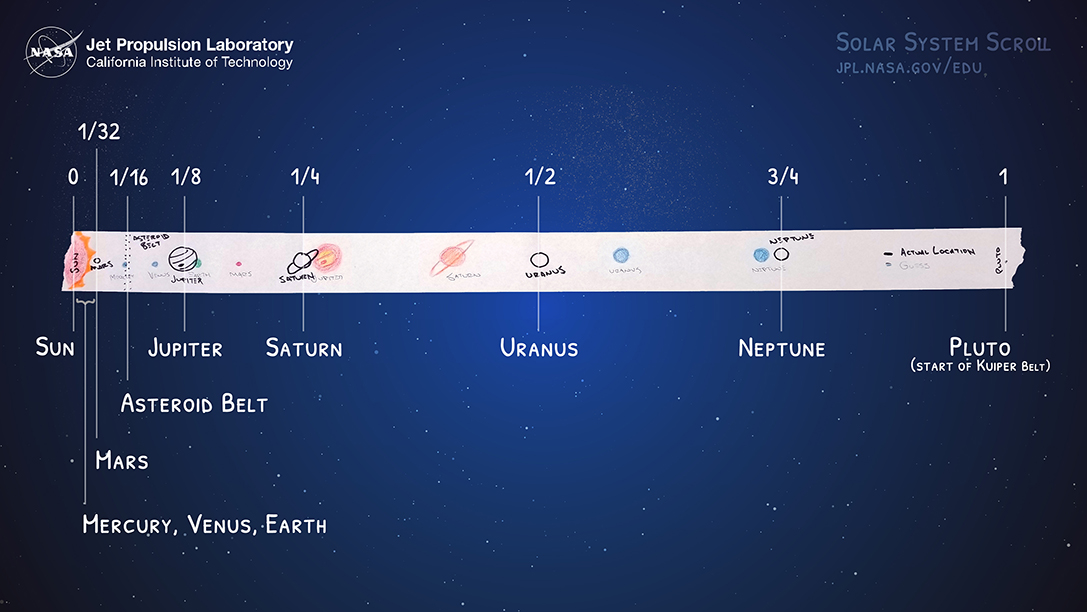
Completed scroll | + Expand image
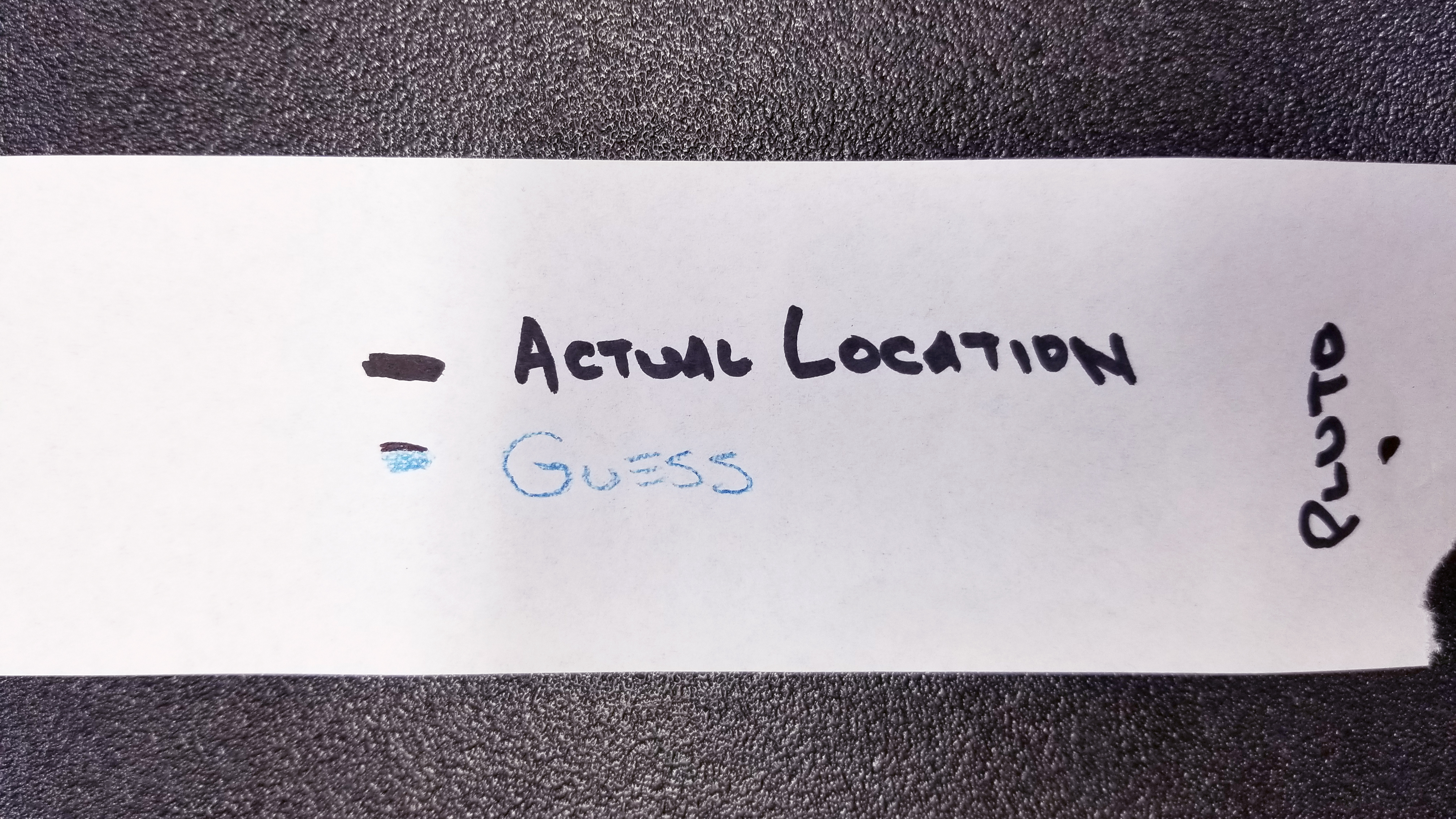
Step 10 | + Expand image
Discussion
- Ask students what surprised them about their guesses versus the actual scale of the solar system?
- We split our solar system into two groups: the inner and outer planets. Discuss how these are broken down and where, in students' models, that split begins
- Aside from inner and outer planets, we have another name for these groups, based on their physical properties. Ask students what they know about the makeup of inner planets versus outer planets that could be used to distinguish them.
- Some planets are closer to Earth, but small, while others are larger but farther away. Which do students think they could easily see in the night sky?





